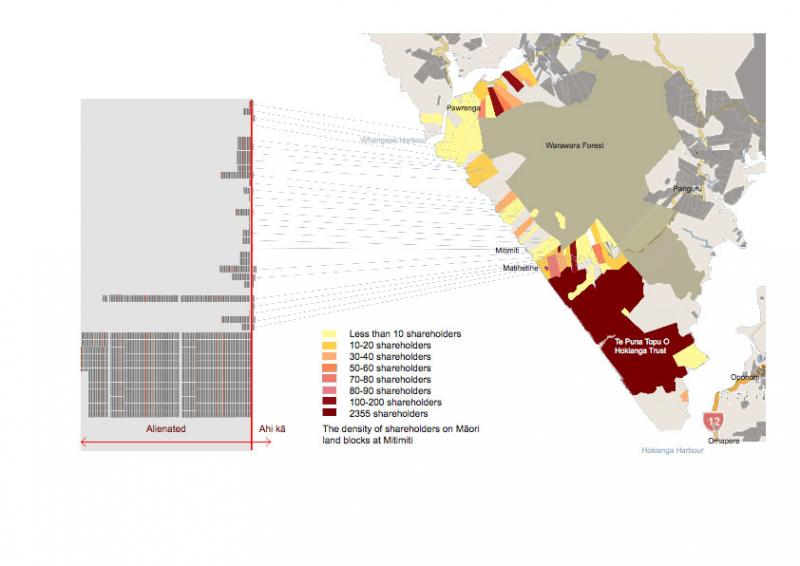Indigenous brands, Maori business, Kaupapa Growth and innovation, collaborative pilot projects, culture connection and exchange, design enabled economic, culturally enriched.

Mapping Conflict
This is a project I am currently working on as part of my Phd research into the Kainga whenua programme. I recently did a presentation for SAHANZ and AUT's post graduate conference on this subject. At this stage the only image is of a map showing densities of shareholders to demonstrate how hard it is for Maori to occupy their ancestral land.
Mapping Conflict
Alienation from land, poor health and substandard housing are a major concern for Maori wanting to live in tribal areas in New Zealand.
The primary aim of this research is to visually document the historical, legal, cultural, economic and political issues which have specifically impacted on Te Rarawa in order to address how these issues can be tested and resolved through developing a collaborative design approach to developing housing on ancestral land for a small Maori community located in the Far North.
In New Zealand, Maori have the lowest level of home ownership. A legacy of institutionalised prejudice in relation to land alienation and housing development has historically made it difficult for Maori to develop and build on their own land. A history of ruthless maneuvers by colonisers and the Maori Land Court, leading to individualisation of title, and ongoing crown acquisitions, has meant that little land now exists in Maori ownership. What is left, is either no longer accessible to whenua or difficult to build on, as there is no equity in multiply owned Maori land.
Caught in a catch 22 of low income, limited employment opportunities or without equity or access to multiply owned land, Maori cannot obtain loans or live on ancestral land. Lack of funding, and restricted access to land has resulted in makeshift, substandard, overcrowded housing in traditional tribal areas. Many government studies have identified the impact poor housing has had on health and well being for Maori communities, but government initiated schemes such as changes to district plans to encourage the development of Pa kainga and the recently developed Kainga Whenua programme to address this issue have had mixed results fraught with difficulties.
The primary aim of this research is to visually document the historical, legal, cultural, economic and political issues which have specifically impacted on Te Rarawa, in order to address how these issues can be tested and resolved through developing a collaborative design approach to developing housing for a small Maori community.
It is framed under two key research questions:
- How have historical, legal, cultural, economic and political issues disenfranchised and alienated Te Rarawa from living in ancestral areas?
- Can these issues be resolved through the documentation of a collaborative design approach for a small Maori community?